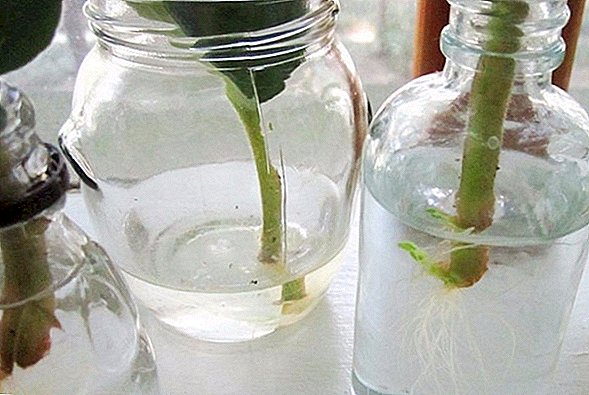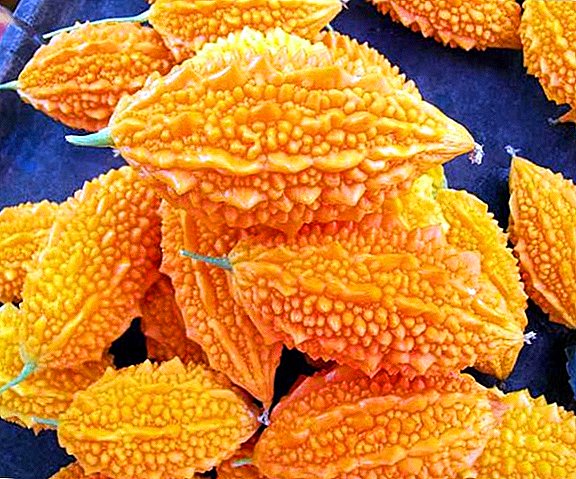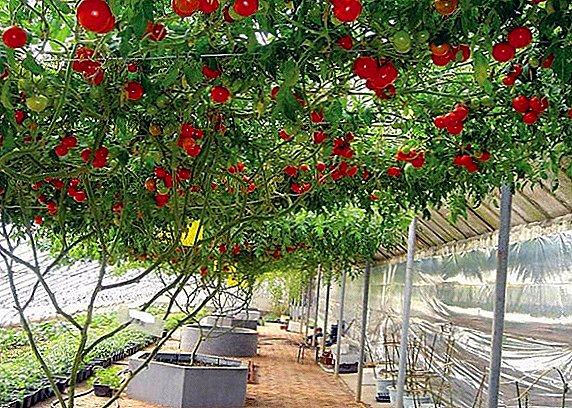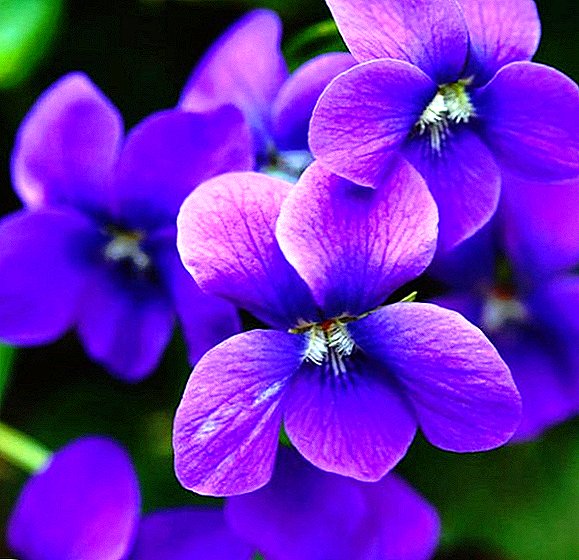 Violet - one of the most beautiful and delicate indoor flowers. At the moment there are about 500 species of violets, each of which has its own unique color and shape of petals. The reproduction of the leaf at home can spend almost every fan of this plant. How to grow a violet at home without cost - let's take a closer look.
Violet - one of the most beautiful and delicate indoor flowers. At the moment there are about 500 species of violets, each of which has its own unique color and shape of petals. The reproduction of the leaf at home can spend almost every fan of this plant. How to grow a violet at home without cost - let's take a closer look.
A little bit about the reproduction of violets
There are four methods of growing a flower. Reproduction by leaf at home is a simple process, if you know about the sequence of methods: leaf, cutting, peduncle, stepchild.
Each method is good in its own way, but the reproduction of violet leaf fragment - the best option for growing plants at home. Why is this way better? It is the most optimal and easy.
Read also about how to properly care for violet at home.
Having mastered this method of flower reproduction, you can move on to more complex ones. In addition, this method can reproduce almost all types of violets - except for the variety "Saintpaulia Chimera".
Important! "Saintpaulia Chimera" gives in to breeding only by peduncles or stepchildren.
Choosing and preparing the sheet for planting
The future life of the flower depends on the selected leaf, so approach this issue seriously. Consider the reproduction of violet leaf step by step.
Violet leaves grow in rows. Considering the bottom, it is not recommended to take breeding material from the first row, as it is old. Do not take the material from the middle of the outlet - it is small. It is best to take from the third row - young leaves, strong and quickly produce offspring.
When choosing a material, you need to pay attention to the following conditions:
- cut leaf must be healthy, bright color, corresponding to the plant variety;
- it should be free of yellow spots, creases, traces of pests and other damage;
- The material must be elastic and keep the shape.
If the material was taken at the exhibition and withered, put a leaf in warm water with potassium permanganate for a couple of hours.
Then the sheet should dry. When the sheet is already selected, the next step will be trimming and preparation for planting.
Fertilizer for violets can be mineral supplements containing superphosphate, nitrogen, potassium, and from organic manure, humate.
How to choose a breeding sheet
How to trim? There are several ways:
- first option - break off with your hands
- the second is to use a sharp knife, blade or garden pruner.
Most gardeners prefer secateurs, because this option is more harmless to the plant.
Did you know? For the ancient Greeks, violet was an indispensable attribute of holidays, the decoration of dwellings and statues of gods. Gauls considered violets a symbol of innocence, modesty and virginity and sprinkled the newlyweds' bed with them. The French competed in Toulouse poetic tournaments, where one of the highest awards was the golden violet.
Rules for preparing the sheet
How to act so as not to harm the plant? It is recommended to make an oblique cut at an angle of 45 °. Having previously disinfected the instrument, cut the material, leaving a small stump on the barrel - 5 mm. The cut must be powdered with crushed activated carbon.
If the cutting on the leaf has a threshold greater than 4 cm, it is necessary to shorten it, if it is less, cut a 6 mm diagonal.
Rooting features
To propagate a flower in this way is quite easy. The whole procedure is to root a cut off piece of the plant. You can do this by several methods, and each of them has its pros and cons.
Did you know? By the way, violet found itself in medicine. A fragrant flower and tricolor violet are used to treat kidney, bronchitis, polyarthritis, purulent and itchy skin lesions.
To planting rooted, apply the method of reproduction in water and in the ground.
In water. The reproduction of violet leaf in water is a more popular way. In this case, you need a dark glass container, where poured cool boiled water, in which it is necessary to dissolve a tablet of activated carbon. The stem is immersed in water at 1 cm. 
The level of the liquid should always be kept under control and replenished with water, if necessary. The rapid appearance of the roots on the slices depends on the type of flower and the temperature in the room. The graft is transplanted into the ground when the length of the roots is 1 cm. The danger of performing this technique is that the cut may become black. In this case, the damaged part is removed, and the sheet is transferred to a new container with water.
- Plus way - the root system is always visible, so you can easily control the process.
- Minus way - during transplantation, the root system may suffer and it will take time to adapt to the conditions.
In the soil mix. For this method, plastic cups are used, at the bottom of which drainage holes are made so that water does not accumulate in the soil and the plant does not start to rot. At the bottom of the glass put a drainage of stones and crushed foam.
This layer covers the bottom of the glass by 2 cm, and the ground is poured on top, leaving space for the sheet so that it is placed at an angle of 45 °. A recess is created for planting in the ground; after planting, the ground is compacted for plant stability. So that the plate of the material does not touch the ground, it is supported by a toothpick. 
- Plus way - cut material accelerates on the spot immediately.
- Minus - It is impossible to follow the development of the roots.
Landing technology
Such a flower as a violet is unpretentious in care, but for reproduction to be successful and the plant to grow strong and healthy, must adhere to such recommendations:
- the ground should be light, nutritious and well pass air and water;
- the optimum temperature for growing violets is from 22 to 26 ° C;
- constant and uniform watering;
- light day - at least 12 hours.
Important! It is worth remembering that in order to grow violets, the air must be constantly humid.
Pros and cons of the method
The advantages and disadvantages of the method of breeding violets leaf are as follows:
- a plus - material does not need to replant.
- minus - continuous monitoring of development.
Sometimes the tip of the stem can start to rot, and then you need to update the cut, transfer the cut material to another container with clean water or into a pot with earth. We advise you to try all the options to decide which one is better.












